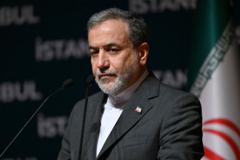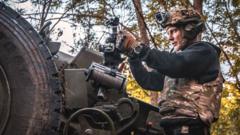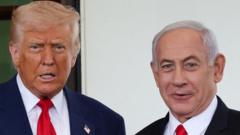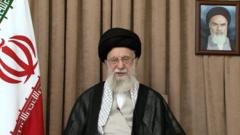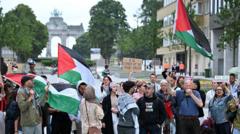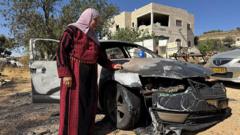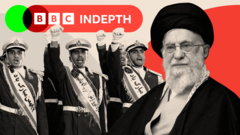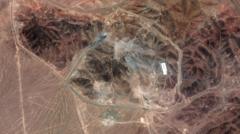As Tehran begins to revive, its citizens express a mix of hope for improved relations and anxiety over ongoing tensions, reflecting a city caught between its desires for normalcy and the trauma of conflict.**
Tehran Eases Back to Normalcy Amidst Lingering Disquiet**
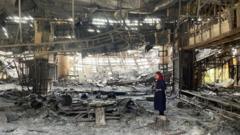
Tehran Eases Back to Normalcy Amidst Lingering Disquiet**
Residents of Tehran grapple with a complicated return to daily life following recent escalations with Israel.**
In the heart of Tehran, life is cautiously returning to what seems like normalcy, yet a profound undertow of concern remains palpable among its residents. The Boof café, situated within the long-defunct US embassy, serves distinctive iced Americanos, providing a stark backdrop to ongoing geopolitical tensions. This café, marked by anti-American murals, symbolizes a complicated relationship between Iran and the US, dating back to the 1979 revolution.
Amir, the café's barista, wistfully shares his desire for the two nations to mend their fraught relationship. "US sanctions hurt our businesses and make it hard for us to travel around the world," he reflects, highlighting the tangible economic impacts on everyday Iranians. Despite the oppressive heat and a city slowly awakening, the café remains only partially filled, illustrating the uncertainty lingering in the air.
This uncertainty was compounded by a recent statement from Iran's Supreme Leader, Ayatollah Ali Khamenei, who spoke defiantly against American opposition while addressing the ongoing military strikes by Israel. The aftermath of a severe Israeli bombing on June 16 left many questions unanswered, as key state media facilities were reduced to rubble, their remnants a reminder of the prevalent fear gripping the nation.
The public's sentiment is mirrored in the local healthcare facilities, where head nurse Ashraf Barghi describes the terrifying onslaught of military injuries she has witnessed. "We don't trust this war has ended," she says, capturing a shared anxiety that pervades the city after recent airstrikes.
In hospitals, scenes of devastation unfolded, particularly after Israeli strikes targeted the notorious Evin prison. Survivors of these attacks express disbelief at the aftermath, as they recount horrific scenes reminiscent of Iran's past military conflicts. Yet, citizens still strive to navigate through their daily lives, gathering in public spaces like the Azadi tower, where a summer concert sought to unify a community fractured by division.
As both supporters and critics of the government blend into the crowds of Tehran, voices call for change, advocating for increased personal freedoms in a nation looking for hope. It is within this complex environment that Iranians continue to articulate their aspirations while grappling with the specter of geopolitical strife, fostering a culture of resilience amidst profound uncertainty.

